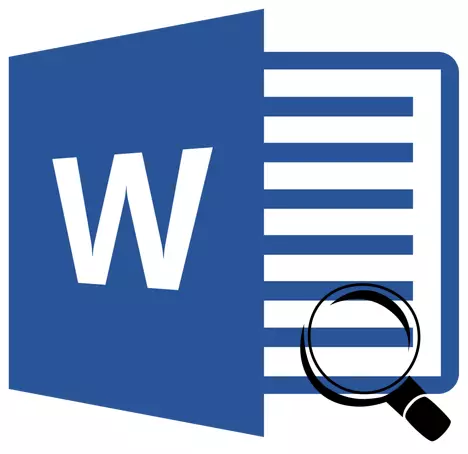
Working with large, multi-page documents in Microsoft Word can cause a number of difficulties with navigation and search for certain fragments or elements. Agree, it's not so easy to move to the right place of a document consisting of a variety of sections, a banal scrolling of the mouse wheel can be seriously tired. It is good that for such purposes to the Word you can activate the area of navigation, about the capabilities of which we will talk in this article.
There are several ways with which you can navigate through the document due to the navigation area. Using this office editor tool, you can find text, tables, graphic files, charts, figures and other items. Also, the navigation area allows you to freely move to specific pages of the document or headlines that are contained in it.
Lesson: How to make a header
Opening the area of navigation
Open the navigation area in the Word in two ways:
1. On the shortcut panel in the tab "The main" In the tool section "Editing" Press the button "Find".
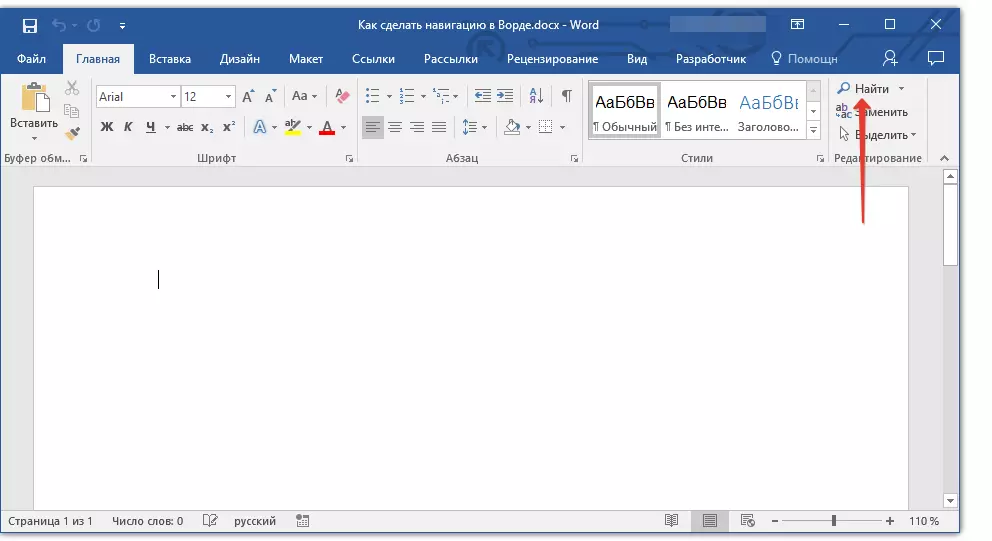
2. Press the keys "Ctrl + F" on keyboard.
Lesson: Hot keys in Word
On the left in the document will appear with the title "Navigation" , all the capabilities of which we will consider below.
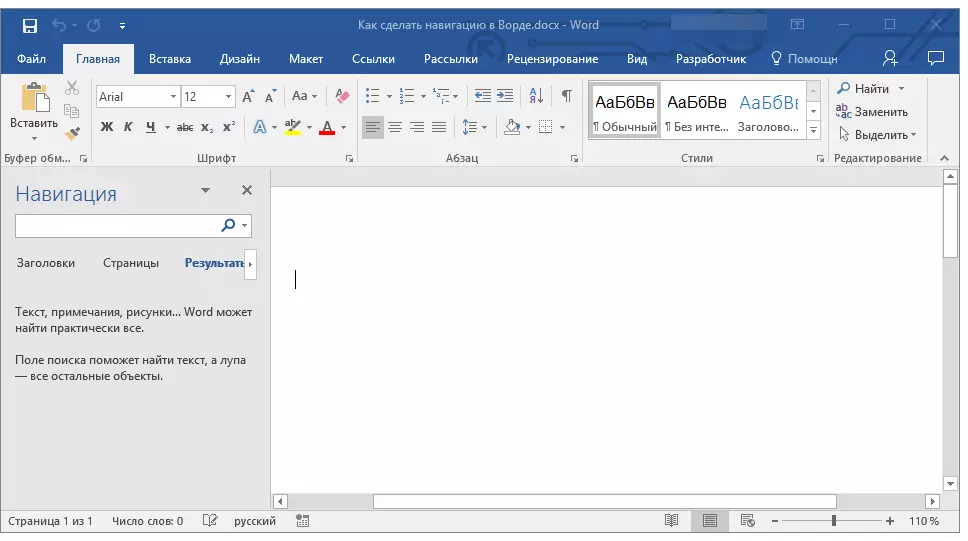
Navigation tools
The first thing that rushes into the eye in the window that opens "Navigation" - This is a search string, which, in fact, is the main tool of work.Quick search for words and phrases in the text
To find the desired word or phrase in the text, just enter it (it) in the search bar. The place of this word or phrase in the text will immediately be displayed in the form of miniatures under the search string, where the word / phrase will be highlighted in bold. Directly in the body itself, this word or phrase will be highlighted.

Note: If for some reason the search result is not displayed automatically, press the key. "ENTER" or the search button at the end of the string.
For quick navigation and switching between text fragments containing a seamless word or phrase, you can simply click on thumbnails. When you hover the cursor on the thumbnail, a small hint appears, in which information is indicated about the document page on which the selected repetition of the word or phrase is located.
Quick search for words and phrases - this is, of course, very comfortable and useful, but this is not the only possibility of the window "Navigation".
Find objects in the document
With the help of "Navigation" in the Word, you can search for various objects. It can be tables, graphs, equations, drawings, footnotes, notes, etc. All you need to do for this, deploy the search menu (small triangle at the end of the search bar) and select the appropriate type of object.
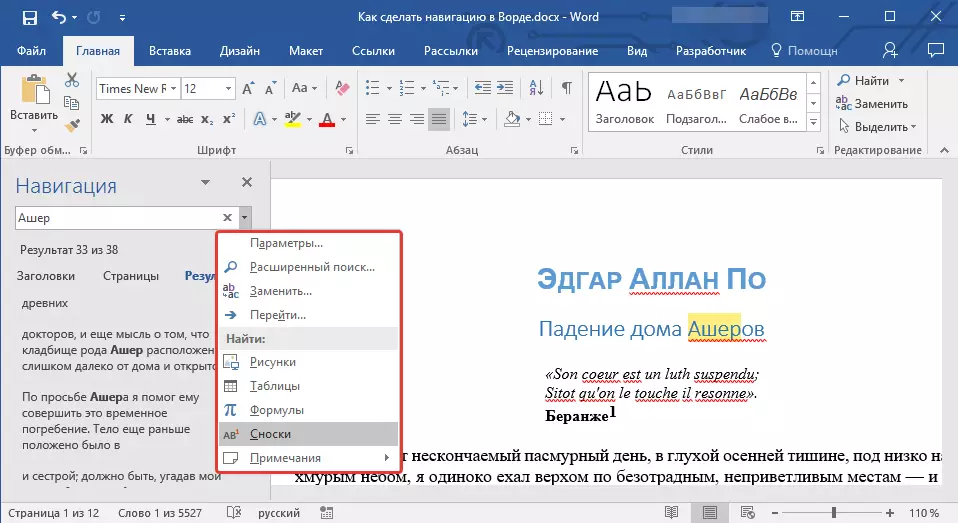
Lesson: How to add footnotes in Word
Depending on the type of the selected object, it will be displayed in the text immediately (for example, a footnote location) or after you enter data to the query (for example, some numeric value from the table or the contents of the cell).
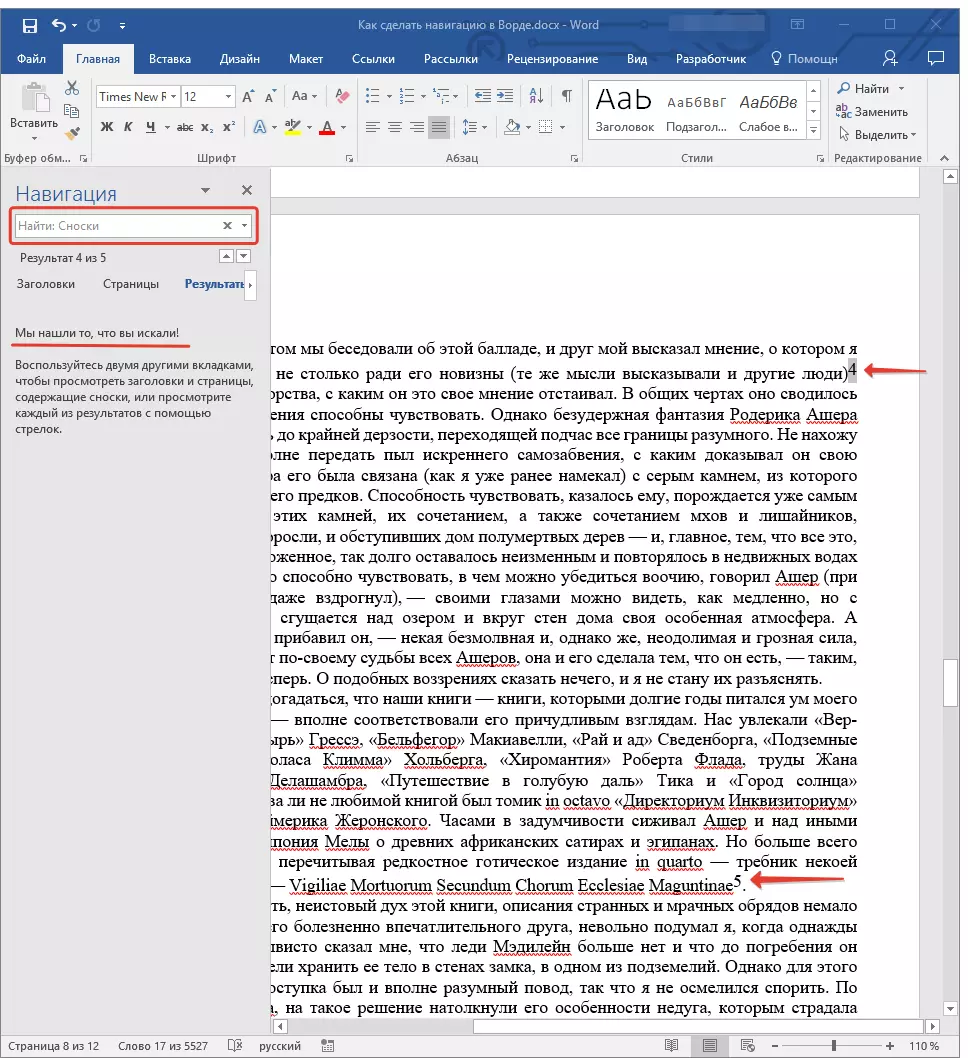
Lesson: How to remove footnotes in the Word
Setting navigation settings
In the "Navigation" section, there are several customizable parameters. In order to access them, you need to deploy the search string menu (triangle at its end) and select item "Parameters".
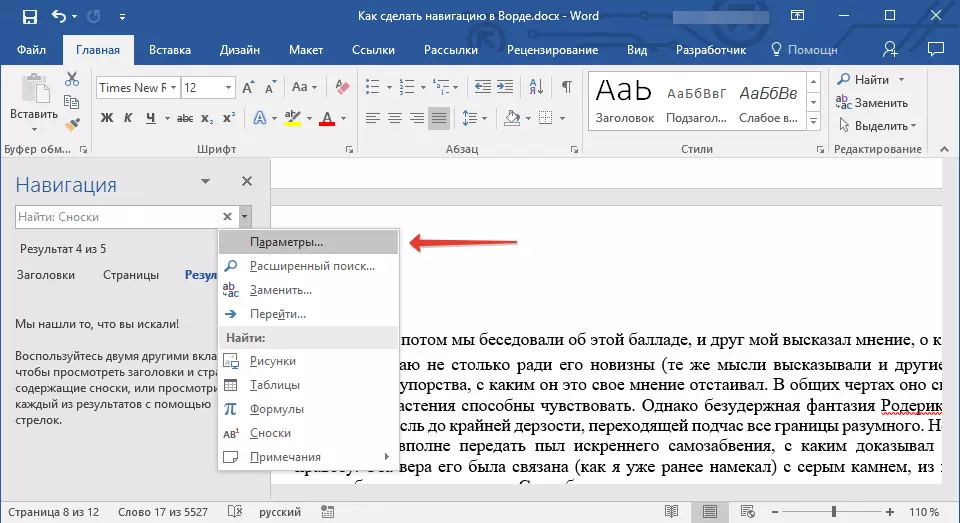
In the opened dialog box "Search parameters" You can perform the necessary settings by installing or removing the check mark on the items you are interested in.
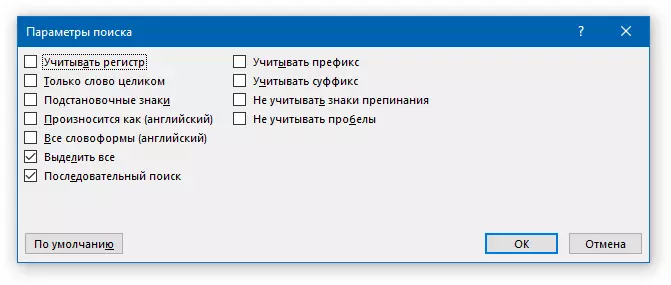
Consider the main parameters of this window in more detail.
Take into account the register - Search by text will be carried out with the case of symbols, that is, if you write the word "Find" in the search bar, the program will search only for such a writing, missing the words "Find", written with a small letter. Applicable and reverse - I wrote a word with a small letter with an active parameter "take into account the register", you will give Word to understand that similar words with a capital letter must be skipping.
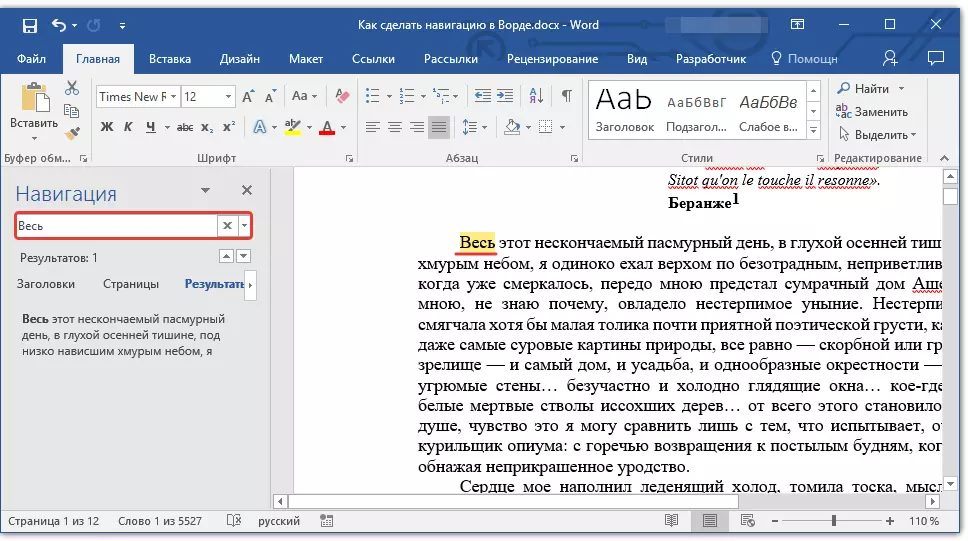
Only the word entirely - It allows you to find a specific word, excluding all his wordworks from the search results. So, in our example, in the book of Edgar Allan on the "fall of the House of Ashers", the surname of the Asher family is found quite many times in various words. By installing a tick opposite the parameter "Only the word entirely" , It will be possible to find all the repetitions of the word "Asher" excluding his declination and single.
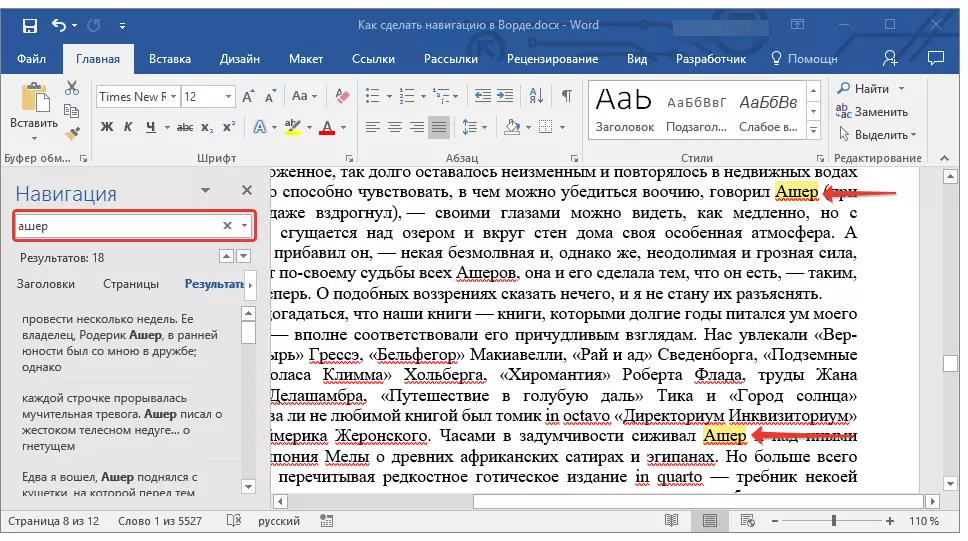
Wildcard signs - Provides the ability to use wildcard signs in the search. Why do you need it? For example, in the text there is some kind of abbreviation, and you remember only some of its letters or any other word in which you remember not all letters (this is possible, yes?). Consider on the example of the same "Ashers".
Imagine that you remember the letters in this word through one. Installing a tick opposite the item "Wildcard signs" , You can write in the search string "A? E? O" and click on the search. The program will find all words (and places in the text), in which the first letter "A", the third - "E", and the fifth "O". All other, intermediate letters of words, like spaces with characters, will not be values.
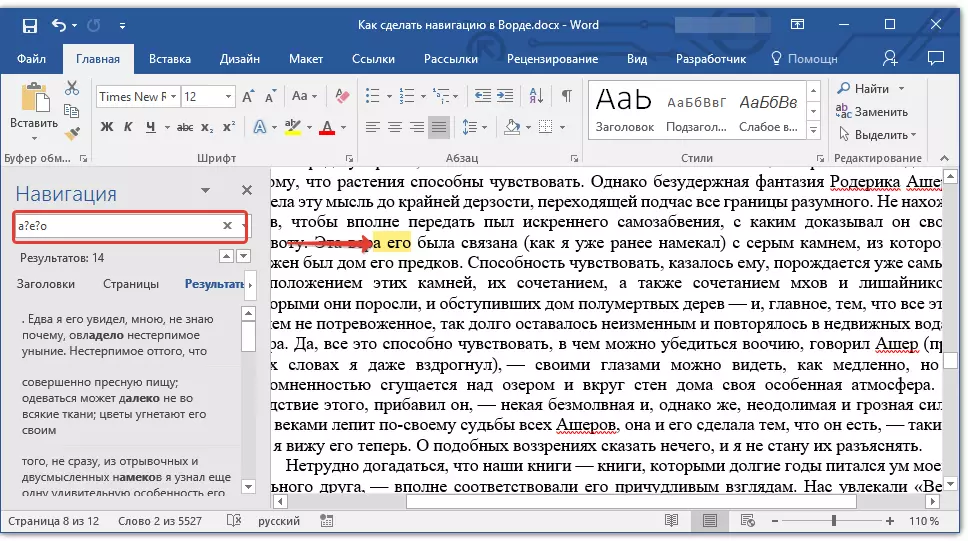
Note: A more detailed list of substitution characters can be found on the official website. Microsoft Office..
Changed parameters in the dialog box "Search parameters" , if necessary, can be saved as the default, clicking on the button. "Default".
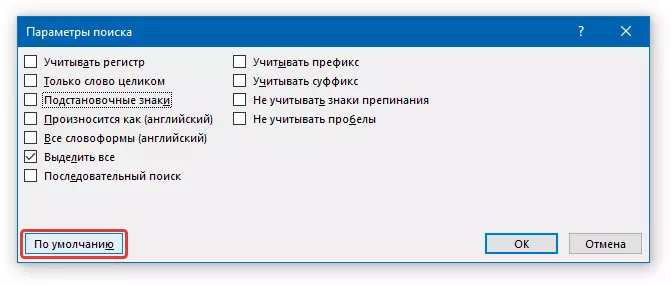
Pressing the button in this window "OK" You will clean the last search, and the cursor pointer will be moved to the beginning of the document.
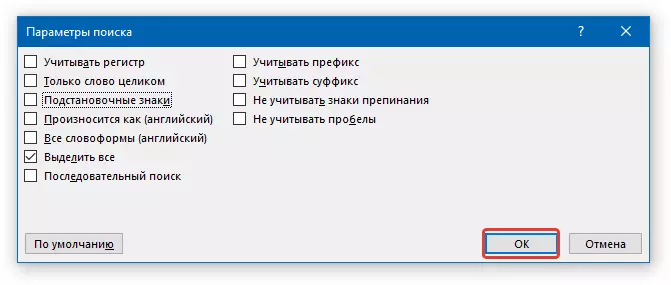
Button press "Cancel" In this window, does not clear the search results.
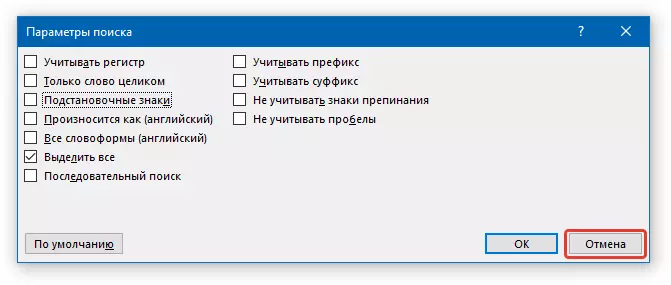
Lesson: Word Search Function
Moving on a document using navigation tools
Chapter " Navigation "For it is intended to quickly and conveniently move by document. So, for quick displacement, the search results can be used by special arrows located under the search string. The up arrow is the previous result, down - the next one.
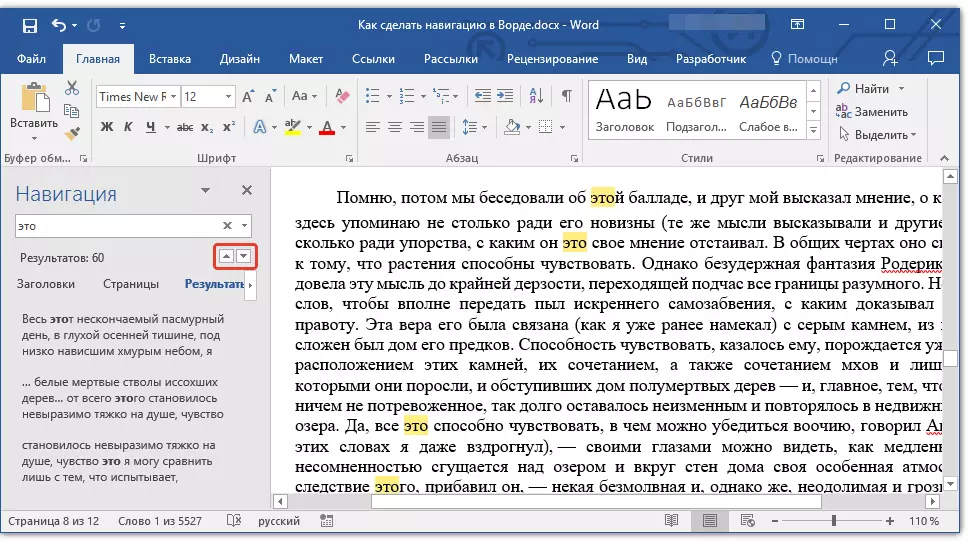
If you were looking for a word or phrase in the text, and some object, the same buttons can be used to move between the objects found.
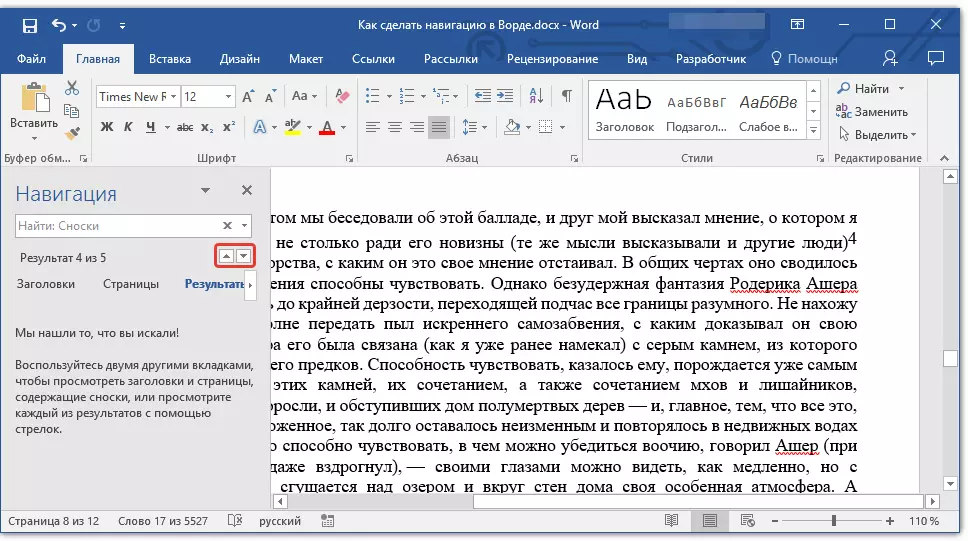
If in the text you work with, one of the built-in header styles, designed also for marking sections, were used to create partitions, the same arrows can be used to navigate the sections. To do this, you will need to switch to the tab. "Headers" Located under the search string window "Navigation".
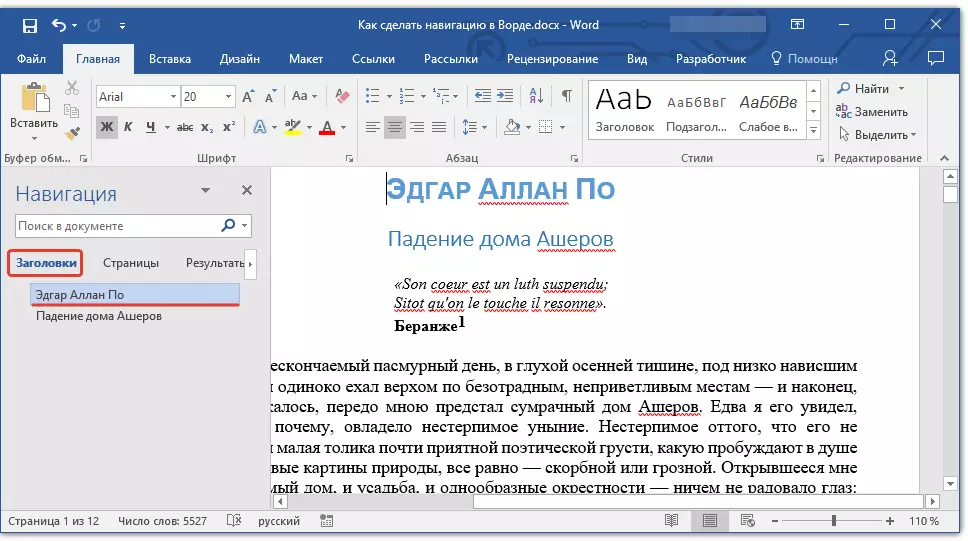
Lesson: How to make automatic content in the Word
In the tab "Pages" You can see the miniatures of all pages of the document (they will be located in the window "Navigation" ). To quickly switch between pages, it is sufficient to simply click on one of them.
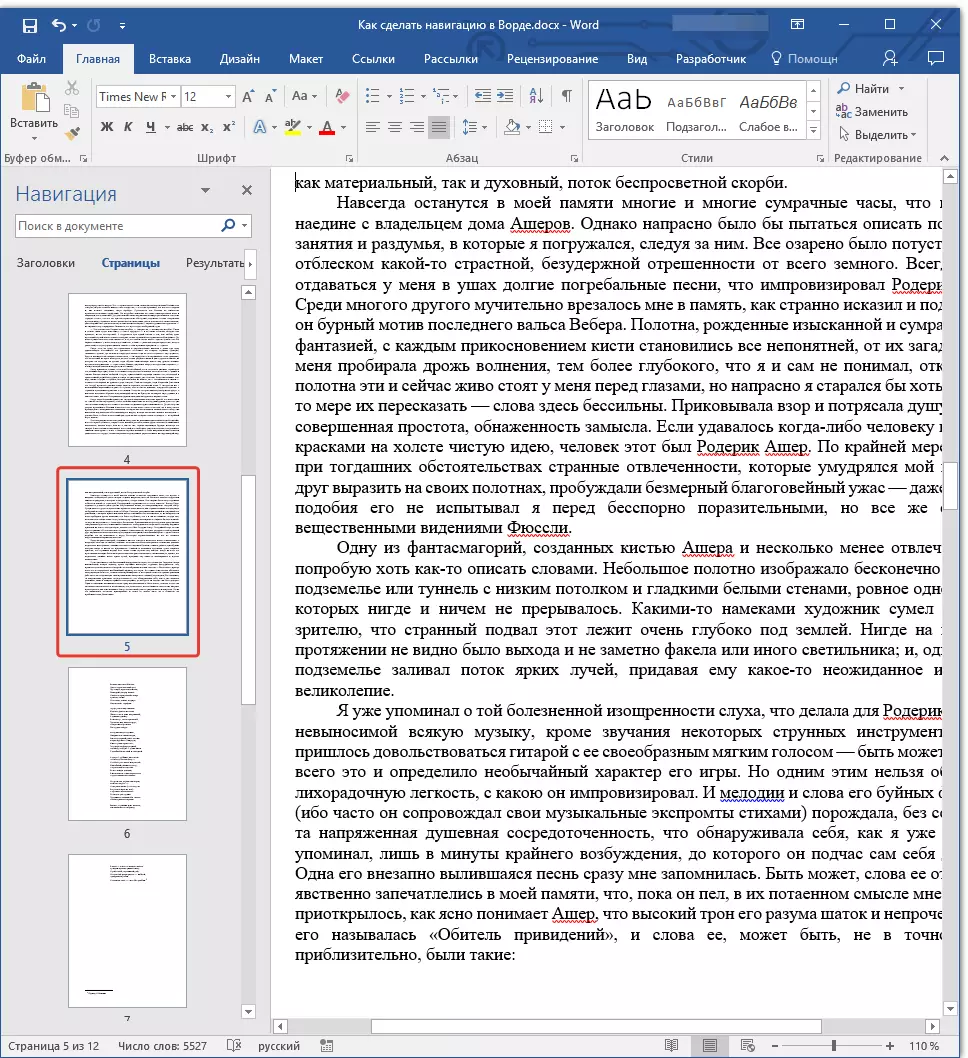
Lesson: How in word numbered pages
Closing the "Navigation" window
After performing all the necessary actions with the Word Document, you can close the window "Navigation" . To do this, you can simply click on the cross located in the upper right corner of the window. You can also click on the arrow located to the right of the window header, and choose a command there "Close".

Lesson: How to print a document in Word
In the Microsoft Word text editor, starting in 2010, the search and navigation tools are constantly being improved and improved. With each new version of the program, moving on the content of the document, the search for the necessary words, objects, elements is becoming easier and more and more convenient. Now and you know about what is navigating in MS Word.
